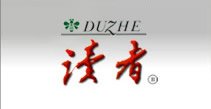天才灵感的迸发
面对癌症,一位无线电管理者想到了一个注意。他的深夜实验能使他获得成功的治疗方法吗?
比得.潘鹏托
王中燕译 (原文选自美国《读者文摘》)
激发灵感
玛丽安.肯兹尤斯被金属的碰撞声从睡梦中惊醒。她伸出手去摸身边的丈夫,约翰。他不在那儿。
她掀开被子下了床,悄悄地走到厨房厅里。半掩在黑色大理石厨台的后面站着与她结婚38年的丈夫,由于癌症的治疗使他身体十分虚弱,面色憔悴。他正在用一把大剪子剪开铝制平底锅。
“你在鼓捣什么呢?”她问道,担心他是不是压力太大而精神崩溃了。“这可都是我的好锅呀!”“我在做实验呢,”他回答说。“约翰,明天你还要化疗哪。”“好吧,好吧。这就去睡觉。”
玛丽安深知管自己叫“A+型”的丈夫的脾气,只能任由他沉迷在他的半夜实验中去。他这种契而不舍的奋斗精神曾让他在商场上大获成功。她知道他没有别的选择只有以同样的精神来与癌症抗争。
2003年12月的那天晚上肯兹尤斯花了几个小时的时间鼓捣他的无线电配件,把金属带缠在他妻子的饼锅上—试图做出一种能减弱无线电发射机信号的东西来。他的半夜实验是靠着治疗他的淋巴瘤的类固醇和止痛药支撑着进行的。一个念头一直缠绕在他的脑海里:导控无线电波也许可以用来加热并破坏癌细胞。
2002年一个星期五的早晨,肯兹尤斯在佛罗里达州福特梅尔斯的森林乡村俱乐部打了一场高尔夫球。他艰苦奋斗了40年在宾夕法尼亚州的伊利周围建立了一系列无线电和电视发射台,现在退休在家坐享回报、颐养天年。
20世纪90年代后期,他和合伙人买掉了这些发射台,携几百万美元荣归故里。身材硕长而健壮,年仅58岁的肯兹尤斯在森尼贝尔岛上买了占地4千平方公尺,有一栋三层白色楼房的家园。他开始尽情地享受退休生活,养芙蓉花和兰花,打高尔夫球,乘16英尺平底船捕捞鲑鱼和鲈鱼,或是乘着他的“海光”游艇与玛丽安还有朋友们一起畅游墨西哥湾。
然而就在那个星期五的下午,享受长久幸福的退休生活的梦结束了。在一次体检后遵循医生的建议,他来到福特梅尔斯的一个放射治疗中心做检查。他有种不详的预感,但没有告诉玛丽安。或许只是一场虚惊罢了。
结果出来了。尽管医生还不能确定他患的是致命的淋巴瘤菌珠还是较易治疗的何杰金病,但他们知道要治疗这种病必须以攻为守。
他向玛丽安说明了这一切。复活节这天,他们开始了这场斗争。他们驱车向北返回家中,要在伊利肿瘤治疗中心开始进行化疗。
到2002年秋天,经过六个月的化疗,肯兹尤斯病情有所缓解。他和玛丽安又去了森尼贝尔岛。但第二年的三月,一次CAT扫描发现癌症复发了。后来他被诊断为白血病并被告知他只有9到12个月的生命期限了。
医学圣盘
收到这个诊断结果后不久的一个晚上,肯兹尤斯回想起他所成就的事业和上帝赐予他的福分。他最关爱的莫过于他的两个女儿和两个儿孙女了。每次来到肿瘤治疗中心看到正在治疗的孩子们他都会想到他们。这些孩子们令他心碎。
孩子们刚来治疗时看上去面色红润,身体健壮。“他们乐呵呵地跟你打招呼。但是到第二次治疗时,就面目全非了。就好像眼看着一位画家把笑容给抹去了。他们拿着玩具熊躺在那里。我心里想,必须要找到比这种伤及骨髓危害巨大的野蛮治疗更好的办法来与癌症作斗争才行。”
得知他需要进行有危险性的干细胞移植后,肯兹尤斯想寻求到另一种治疗办法。2003年七月的一个晚上,肯兹尤斯难以入眠,他坐在伊利家中的电脑前开始在网上搜寻世界上最好的白血病专家。他的搜寻结果不断地出现一个人的名字--德克萨斯州MD安德森癌症医疗中心医科大学的迈克尔.吉廷
肯兹尤斯给吉廷博士发了一封电子邮件请求帮助。信中描述了他的病情,治疗方法及对病情的预测。两点钟他点击发送了邮件,令他惊讶的是第二天下午他就收到了回信。
吉廷在信中写到他认为肯兹尤斯有可能患的不是他的医生所诊断的那种白血病,并邀请他到休斯顿来做进一步的检查。肯兹尤斯来到了休斯顿,果然检验证明吉廷是对的。肯兹尤斯患的是罕见的B-细胞白血病—一种附着在抗病细胞上的癌细胞。吉廷认为用另一种化疗方案可能会奏效。
那年九月份肯兹尤斯在伊利开始了治疗,去南方过冬时他们就去佛罗里达州的一个医院继续治疗。玛丽安成了他的全天陪护,每次八小时静静地坐在旁边等待着化疗药物滴滴注入他手上的血管里。
在漫长的等待的过程中,肯兹尤斯苦苦地思索着他给自己出的这个难题:有更好的方法治疗癌症吗?他回想起早年做无线电工作时,守在高能量发射机旁工作的那些日子。如果不带手表或金属项链就不会有什么问题。但他记得有一次,一位同事带着一副金丝边眼镜站在发射机旁被灼伤了。
可不可以给癌细胞包裹上一层传导性物质,然后用无线电波烧死癌细胞?或许可以只摧毁癌细胞而不会伤害周围的健康细胞。
有针对性的,非破坏性的治疗方法乃是实验性医学之圣盘。目前,一种称作射频热融术的治疗方法正在被肿瘤专家们所使用,但是这种治疗方法需要通过外科手术将探针直接插到癌细胞组织中去。而肯兹尤斯的设想只是向癌细胞内注入一种物质,起到微型天线的作用。然后这些被标示的细胞就可以被无线电波烧死—恰似他的同事带着金丝眼镜被灼伤时所发生的情况一样。加热是由体外发射机来进行的。周围没有“天线”的健康细胞将不会受到任何影响。
如果这一方法奏效的话,那么可怕的化疗或许就可以被取而代之了。他的这一想法日夜地盘旋在他的脑海里,最后导致了用玛丽安的饼锅做实验的一幕—而且远不至此。
验证理论
2004年新年过后不久,吉廷博士的治疗结束了,肯兹尤斯恢复了体力,他把全部精力都投入到了这一理论的验证中去了。
一开始他用还能吃进去的几种食物之一—热狗做实验。他在一部分热狗中注入了金属物质,将热狗放在发射机与接受机之间,然后启动了机器。虽然实验简单粗糙,气味难闻,但其结果却是鼓舞人心的。每次都是注入金属物的部分被烧焦,而其余的部分安然无恙。那么同样的原理能否适用于细胞类呢?
在验证理论的过程中,他开始向医生询问有关细胞结构的问题,并慢慢地开始向医生透露他的简单实验的结果。
罗伯特. 麦克唐纳是位于福特梅尔市的佛罗里达州西南区医疗中心的核医疗主任,他也成了肯兹尤斯的朋友。他回忆起有一天与肯兹尤斯在森尼贝尔岛的一家餐馆一起吃午饭时的情景,那天他们吃的是火烈鸟、烤鲶鱼三明治和啤酒。他们的谈话内容从钓鱼到肯兹尤斯的病情,很快就谈到了他的理论。肯兹尤斯这一理论背后的科学道理看似十分简单,但是麦克唐纳感到他的朋友的确有所发现。“从概念上讲,它似乎是合理的。”麦克唐纳回忆道。“我对这一理论所蕴涵的前景感到震惊。”
肯兹尤斯开始在医学界的朋友中传播他的这个设想。作为从未受过医学培训的人来说,他原以为那些肿瘤专家和癌症研究者们都会对此持怀疑态度,但没想到他的想法却激发了他们的想象力。经过多次讨论后,肯兹尤斯于五月份申请了专利。
关于肯兹尤斯进行这一研究工作的消息引起了匹兹堡医疗中心大学(UPMC)肝癌研究中心主任大卫.盖勒的注意,他愿意在他的实验室里进行这一技术实验。
肯兹尤斯的设想也引起了休斯顿MD安德森癌症医疗中心的外科肿瘤教授史蒂文.A.科里博士和附近的赖斯大学的诺贝尔奖获得者里查德.斯矛勒的关注。
2005年8月,约翰,玛丽安和科里聚集在匹兹堡医疗中心大学盖勒的实验室里。20’X20’荧光灯照明的房间通常是用来做动物移植实验的。现在一个更为复杂的肯兹尤斯型无线电发射机摆放在一个角落里,约翰将手指放在了开关上。
所有的目光都集中在一个狭窄的试管上,里面三分之二装着黑色的粘性液体,试管被夹在机器的两个联结器之间。试管里的溶液含有科里博士希望能放到肿瘤里去的碳素纳米颗粒。如果来自外部的热源可以加热这些小颗粒的话,那么这些小颗粒就可以像肯兹尤斯的热狗里的金属粒一样摧毁有病的细胞。关键时刻来到了。肯兹尤斯在开关钮上轻轻一按。
冷却发射机的风扇嗡嗡地响着—试管里的温度开始上升了。温度需要达到华氏130度才能杀死癌细胞。转眼间试管内的液体就超过了130度—并且开始沸腾。
“肺癌、肝癌、前列腺癌、乳腺癌,”科里大声说着。这些是有可能用这项技术治疗的癌症。“我们可以针对不正常的蛋白质,在纳米粒中放上一个极性电荷,用磁力把它们集中到肿瘤部位。”
今年年初,进行纳米加热的基础研究之后,科里在休斯顿的研究小组开始在几种人类癌症实验样本上进行测试,其中包括胰腺癌、肝癌和肠癌细胞株。测试结果一直是可喜的,MD安德森医疗中心目前正进一步在活的动物上做研究实验以使射频加热杀死癌细胞的过程更精确无误。
当然要完成人体实验的过程尚需一些时间,但科里相信这一治疗方法为癌症病人带来了福音。
具有讽刺性且令人悲哀的是肯兹尤斯的治疗方法对他本人的癌症类型并不奏效。然而想起化疗中心的那些孩子们时,他说:“给他们减轻痛苦,带来希望是很值得的。”
现在肯兹尤斯的白血病已见缓解,他和妻子正在森尼贝尔岛上的高尔夫球场旁的白房子里共享时光。
而且他还没有停止他的实验。
图片
凯利.拉杜科拍摄
约翰. 肯兹尤斯开发利用了无线电波的功能,开拓了美国一流的肿瘤专家们的想象空间。
原文:Sparks of Genius
Faced with cancer, a radio executive had an idea. Could his late-night tinkering lead to a cure?
By Peter Panepento
From Reader/s Digest May 2006
Tuning In to a Brainstorm
Marianne Kanzius was startled from sleep by the sound of metal banging on metal. She reached across the bed for her husband, John. He wasn/t there.
She slipped out from under the covers and quietly walked down the hall to the kitchen. There, half- hidden behind the black granite countertop, looking worn and emaciated from his cancer treatments, stood her husband of 38 years. He was cutting apart aluminum pans with a pair of shears.
"What the hell are you doing?" she asked, wondering if the stress had finally gotten to him. "Those are my good pie pans."
"I/m working on an idea," he answered.
"John, you have chemo in the morning."
"Okay, okay. Go back to bed."
Marianne knew her husband, who called himself a "Type-A Plus," well enough to leave him alone with his midnight obsession. His ceaseless drive had made him a success in business. She understood he had no choice but to fight cancer the same way.
Kanzius spent hours that evening in December 2003 banging away at spare ham-radio parts, combining tightly wound metal coils and his wife/s pie pans -- trying to make something that would let him modify the signal from a radio transmitter. His late-night tinkering was fueled by the steroids and painkillers used to treat his lymphoma. By now an idea obsessed him: that directed radio waves could be used to heat and destroy cancer cells.
Early on Good Friday 2002, Kanzius played a round of golf at the Forest Country Club in Fort Myers, Florida. He/d worked 40 hard years building a chain of radio and TV stations around Erie, Pennsylvania, and now was reaping the rewards in retirement.
In the late 1990s, he and a partner sold their stations and took home millions. Strong, slender and still only 58 years old, Kanzius bought a 4,000-square-foot, three-level white stucco home on Sanibel Island. He threw himself into retirement, growing hibiscus and orchids, playing golf, trolling for redfish and snook in a 16-foot flat-bottom boat, or pleasure cruising the Gulf of Mexico with Marianne and friends in his Sea Ray.
But on that Good Friday afternoon, the long, happy retirement dream ended. Following a doctor/s recommendation after a physical, he went for an exam at a Fort Myers radiology center. He feared something was wrong, but didn/t tell Marianne. Maybe it was just a false alarm.
Then the results came in. Though doctors weren/t sure if he had a deadly strain of lymphoma or a more curable form of Hodgkin/s disease, they knew it had to be treated aggressively.
He laid it all out for Marianne, and on Easter Sunday, they began the battle. They drove north back home, where he would start chemotherapy at a cancer center in Erie.
In fall 2002, after six months of chemo, Kanzius was in remission. He and Marianne headed for Sanibel. But the following March, a CAT scan revealed the cancer had returned. He was later diagnosed with leukemia, and told he had 9 to 12 months to live.
The Holy Grail of Medicine
One night, shortly after receiving this prognosis, Kanzius began thinking about his accomplishments and his blessings. At the top of his list were two daughters and two grandchildren. He thought of them every time he went to the cancer center and saw the children there undergoing treatment. The kids broke his heart.
When they first came in, they looked strong, their complexions rosy. "They/d greet you with a grin. By the second treatment, that all faded. It was like watching an artist paint away the smiles. You/d see them lying there with their teddy bears. I thought to myself, There/s got to be a better way to fight cancer than this barbaric treatment that eats your bone marrow and does tremendous harm."
Told he/d have to have a risky stem-cell transplant, Kanzius sought one more opinion. Unable to sleep, he sat at his computer in his Erie home on a July night in 2003 and began surfing the Web to find the world/s best leukemia specialist. His searches repeatedly brought up the name of one person -- Michael Keating at the University of Texas MD Anderson Cancer Center.
Kanzius sent an e-mail asking Dr. Keating for his help. He included a description of his disease, treatments and prognosis. He hit the send button at 2 a.m. and, to his surprise, received a reply the next afternoon.
Keating wrote that he believed Kanzius might not be suffering from the form of leukemia his doctors had diagnosed, and invited him to Houston for more tests. Kanzius made the trip, and it turned out Keating was right. Kanzius had a rare form of B-cell leukemia -- a cancer that attaches itself to the cells that fight disease. Keating thought a different chemo regimen might work.
Kanzius started treatments in Erie that September and continued them at a hospital in Florida when he and Marianne went south for the winter. She became his full-time caregiver, sitting quietly with him for eight hours at a time while chemicals dripped through an IV attached to a vein in his hand.
As they waited together through the long hours, Kanzius struggled with the problem he/d posed for himself: Was there a better way to treat cancer? He thought about his early days in radio, working around high-powered transmitters. There was no problem if you weren/t wearing a watch or metal necklace. But once, he remembered, a colleague stood next to a transmitter wearing wire-rimmed glasses and got burned.
What if you could somehow infuse or coat cancer cells with a conductive substance and then zap them with radio waves? Maybe you could destroy cancer cells without harming healthy ones nearby.
Targeted, noninvasive therapy is the Holy Grail of experimental medicine. A treatment called radio-frequency ablation is currently used by some oncologists, but the therapy involves a surgical procedure in which probes are driven directly into the cancerous tissue. Kanzius/s idea would require only an injection of substances that would accumulate in tumors and act like tiny antennas. The marked cells could then be heated by radio waves -- just as had happened with his colleague/s wire glasses. The heating would be done from a transmitter outside the body. Nearby healthy cells without the "antennas" would not be affected.
If it worked, he thought, maybe the awful chemotherapy treatments could be eliminated. His idea became a round-the-clock obsession, leading to the experiment with Marianne/s pie plates -- and eventually far beyond.
Proving the Theory
The treatments ordered by Dr. Keating ended shortly after New Year/s 2004, and as Kanzius regained strength, he poured what energy he had into proving his theory.
He began testing one of the few foods he could stomach -- hot dogs. He injected parts of them with minerals, placed them between the transmitter and receiver, and fired up his machine. The tests were crude and the smells awful, but the results were encouraging. Each time, the injected part of the meat would burn. The rest was uncooked, unharmed. Could the same principle apply at the cellular level?
While testing his theory, he began asking his doctors questions about the makeup of cancer cells, and slowly began sharing some results from his simple tests.
Robert McDonald, co-director of nuclear medicine at Southwest Florida Regional Medical Center in Fort Myers, had also become Kanzius/s friend. He recalls meeting Kanzius for lunch at a Sanibel Island restaurant, the Lazy Flamingo, for grilled grouper sandwiches and beer one day. The conversation drifted from fishing to Kanzius/s disease and soon, to his theory. The science behind Kanzius/s concept was simple enough, but McDonald suspected his friend had really come up with something. "Conceptually, it seemed sound," McDonald recalls. "I was blown away by the potential."
Kanzius began to circulate his idea among friends in the medical profession. As someone with no medical training, he expected to be greeted with skepticism from oncologists and cancer researchers alike. Instead, his idea seemed to capture their imaginations. After many discussions, Kanzius filed for a patent in May.
News of Kanzius/s work drew the notice of David Geller, co-director of the University of Pittsburgh Medical Center (UPMC) Liver Cancer Center, who wanted to test the technique in his lab.
Kanzius/s idea also attracted the attention of Dr. Steven A. Curley, a professor of surgical oncology at MD Anderson Cancer Center in Houston, and Nobel Prize winner Richard Smalley at nearby Rice University.
In August 2005, John, Marianne and Curley gathered in Geller/s lab at UPMC. The 20/x20/ fluorescent-lit room was normally used for conducting transplant experiments on lab animals. Now a much more sophisticated model of Kanzius/s radio transmitter had been set up in one corner. John put his finger on the switch.
All eyes were fixed on a narrow test tube -- two-thirds filled with a viscous black liquid -- clamped between two couplings on the machine. The solution inside the tube was composed of carbon nanoparticles Dr. Curley hoped could be put inside tumors. If this experiment showed that it was possible to heat the tiny particles with energy from an outside source, they might be used to destroy those diseased cells just like the minerals in Kanzius/s hot dogs. The crucial moment had arrived. Kanzius flipped the switch.
Fans cooling the transmitter wailed with a sound like a high-powered leaf blower -- and the thermometer inside the tube began to climb. The temperature needed to reach 130 degrees Fahrenheit in order to kill cancer cells. Within seconds the substance passed 130 degrees -- and began to boil.
"Lung, liver, prostate, breast cancer," Curley said out loud. Those were the cancers that could potentially be treated with this technique. "We could target specific abnormal proteins, put a polar charge on the nanoparticles and use magnets to focus them on those areas of the tumor."
Early this year, after conducting background research on the heating of the nanoparticles, Curley/s team in Houston began tests on lab specimens of several human cancers, including pancreatic, liver and colon cancer cell lines. The results have been remarkable, and MD Anderson is moving on to live animal research in order to fine-tune the process of killing cancer cells through radio-frequency heating.
It will, of course, take time to clear the procedure for human testing, but Curley believes the therapy holds great promise for cancer patients.
It is a sad irony that his treatment may not work against the type of cancer Kanzius himself is suffering from. Remembering the children in the chemo center, however, he says, "Getting them some relief, giving them some hope, would be worth it."
His leukemia in remission now, John and Marianne Kanzius are sharing time together in the white house by the golf course on Sanibel Island.
And he hasn/t stopped tinkering.
( picture)
Photo by Kelly Laduke
John Kanzius tapped the power of radio waves and captured the imaginations of the nation/s top oncologists.

联系电话:03102615217
联系地址:河北省唐山市卫国路人民警察训练学校王中燕 063000 |


